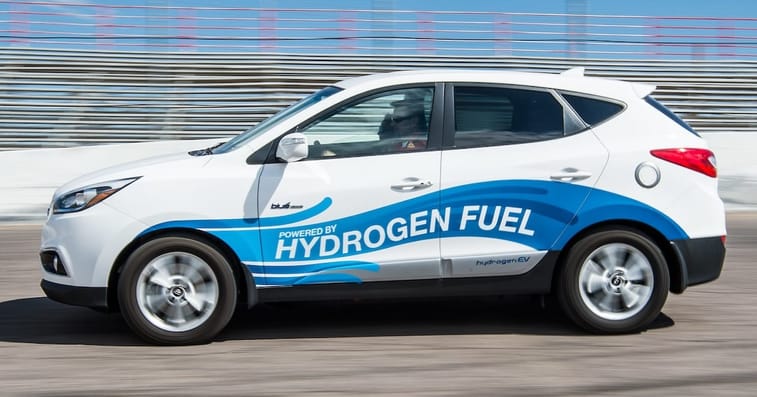
Jeff, glad you are back! It is great to see your new website is available with expanded tech investment research. I totally agree about the hazards associated with lithium batteries, the potential for nuclear fusion, and the politicization of “global warming.” That being said, I don't understand why hydrogen fuel cell technology has not advanced. Why are your thoughts? Appreciatively. — John E.
Hi John,
Glad to be back, and thanks for the positive feedback on the website.
We’ve been working hard on it and are in the process of completing our 2nd generation website, which will be even better — more on that very soon.
We’ve already outgrown our existing site and found we needed to scale much sooner than we expected. That’s a good problem to have.
And thanks for the question on hydrogen fuel cell technology. This is one of my favorite topics, as it is so widely misunderstood.
First, let’s start with some basics so we’re all on the same page.
We can think of hydrogen fuel cells in a similar way as we do about an internal combustion engine (ICE). Neither will operate without fuel.
And ICE is fueled by gasoline, where as a hydrogen fuel cell is fueled by hydrogen.
As long as either “engine” is fed fuel, they’ll run.
This differs from a battery electric vehicle (BEV). A BEV is charged. The battery stores energy, which is dispersed through the use of the BEV. When the energy stored is depleted, the BEV won’t run.
Like a lithium-ion battery, hydrogen fuel cells have an anode and a cathode, and in between there is an electrolyte.
The hydrogen “fuel” is fed to the anode, and air is fed to the cathode. Hydrogen fuel cells use a catalyst at the anode — typically platinum — to separate the hydrogen into protons and electrons.
The electrons go through a circuit, creating the electricity needed to power a vehicle, and the protons shuttle through the electrolyte to the cathode where they combine with oxygen to form water and heat.
Water and heat are the only two byproducts of using hydrogen as fuel.
Sounds wonderful right? Super clean isn’t it? The only byproduct is water and heat…
More on that later…
Not surprisingly, this is a major part of how the hydrogen industry positions its technology as even better than lithium-ion battery technology. They'll tell us:
To be fair, these are all true points. The above is the “sales pitch.”
Which also fails to recognize the disadvantages of hydrogen fuel cells and hydrogen as a fuel.
Sadly, most politicians, policymakers, and “elites” either ignore these or are too ignorant to understand them. They just want the virtuous headline. They just want the appearance of being “clean.”
To better understand the problems with hydrogen fuel cells, let’s break this into two parts: hydrogen (the fuel) and hydrogen fuel cells (the technology).
Regarding hydrogen as a fuel, about 95% of all hydrogen produced comes from fossil fuels like coal and natural gas. The industry emits 830 million tonnes of carbon dioxide (CO2) a year just to produce 74 million tonnes of hydrogen.
Not only is this not clean, it is a far dirtier outcome than just using gasoline.
The only “benefit” is that the individual vehicle that is using hydrogen/hydrogen fuel cells does not have any local emissions. Again, this is the same issue as EVs. (We explored the truth about EV emissions in depth right here, in the January 18, 2023 issue of Outer Limits.)
The emissions are simply displaced — they happen somewhere else, just to give the appearance of a clean energy vehicle.
As or why hydrogen fuel cells as a technology have not seen widespread adoption, there are some very good reasons:
On this last point, let’s use an example to bring it to life.
Let’s take an aviation example, where we assume the same amount of mechanical energy output (230 MWh) using different kinds of fuels. Here’s the difference in the volume of the fuel required to achieve the same energy output.
It’s a night and day difference isn’t it?
The tank/vessel needed to fuel a hydrogen fuel cell has to be larger for an equivalent energy output. This creates some difficult design constraints, especially when we consider hydrogen fuel cells in the context of passenger vehicles.
That’s why we don’t see them typically in cars. The industry, therefore, focuses on applications for buses, trucks, and industrial storage.
Again, the cost of this technology is disadvantageous, as is the operating cost (cost of hydrogen fuel).
And it is absolutely not clean when considering where the hydrogen comes from. It only gives the appearance of being clean as there are no local emissions.
It’s this last point that gives companies access to subsidies and grants for using the technology.
Now, with all that said, it doesn’t mean that there aren’t good investment opportunities out there. After all, if a government decides it wants to spend $100 billion to build hydrogen infrastructure and appear to be “clean and green,” a lot of business will take place.
So as investors, it’s important for us to analyze and understand not just the technology and the products, but also if there are some other drivers that might make an investment a good one, despite the technology being more expensive and not actually achieving the stated goals.
John, that’s probably more context that you were expecting, but I want my subscribers to be the most well-informed on the planet about issues like these.
Our goal is to see and understand things as they are, not as they are desired to appear to be.
Thank you to everyone who has written in. We read each and every email and address common questions in the Friday AMA issues. Please write to us by clicking here.